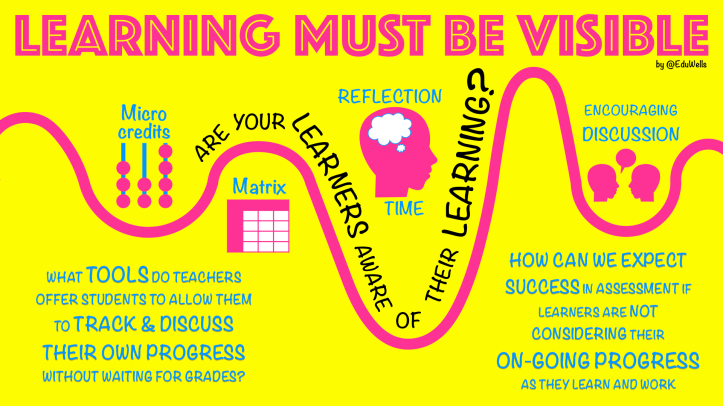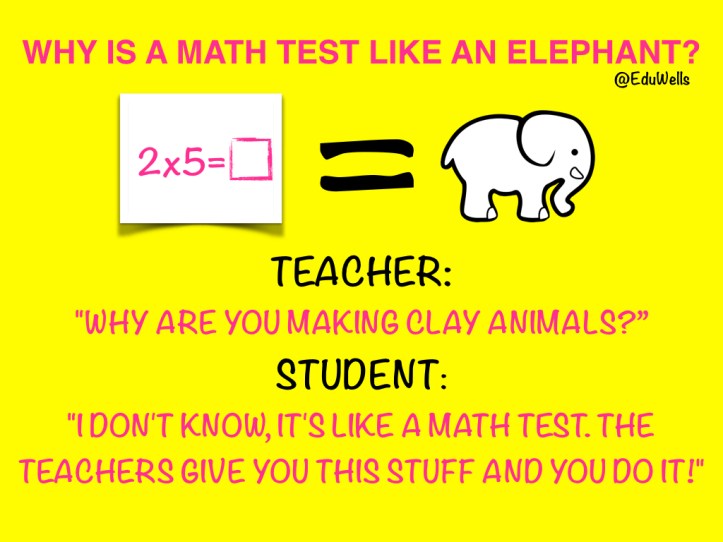I had a fantastic planning day with the leaders in my school yesterday where we evaluated how conscious and engaged our students were in their own learning. The consensus was that our overall system was still very teacher driven and much work had to be done to encourage teachers to involve the students in, and make them more aware of the process of learning they were experiencing.

Why IS a Math test like a clay elephant?
I had a brief conversation with a 12 year old boy this month that went as follows:
Teacher: “What’s your favourite subject?”
Student: “Art”
Teacher: “What are you doing in Art?”
Student: “Making clay animals”
Teacher: “Why are you making clay animals?”
Student: “I don’t know, it’s like a math test. The teachers give you this stuff and you do it!”
Unless teachers make the reason for and the progress in learning something permanently visible to the learners, the tasks and activities just become “more work.” There are many tools teachers can use to do this:
- Learning / goal matrix
- Micro credits
- Student reflection & planning time
- Student designed assessment criteria
- Peer-assessment
- Peer critiques & discussion on progress
The more progress, however small, is visible to the individual, the more they will develop a growth mindset(My intelligence can grow and is not fixed). Once this mindset is present in a learner, many problems that schools have to deal with start to disappear. Motivation becomes intrinsic and extra effort is applied. This post by Peter DeWitt highlights the great work of Carol Dweck on proving that growth mindset does not come from simply applying more effort but is what generates more effort.

Feeling involved as an active player in the learning process
The important consideration that came up in our discussion yesterday was the sense that the individual learner felt involved in the process. Offering every opportunity available for the students to make decisions and be responsible for the shape of the outcomes that achieve the goal, preferably a goal they set themselves. It was important for students to not be taught as a class because they would think as a class and not individuals. Understanding one’s existence as just a body in a class undervalues the individual and lessens genuine engagement beyond that of compliance.
Teachers need to ensure they are planning and developing environments where the individual expects to act as such, devising and tracking their own progress towards goals. Once the process of learning is made visible and the individual feels involved in that process, answering the question “why are we doing this?” is much easier for everyone, including the teacher!
Note: Computer games are popular predominantly because they all make progress as visible as possible.
I written more on this subject in my new book A Learner’s Paradise: How New Zealand is reimagining Education (Paperback and eBook)

